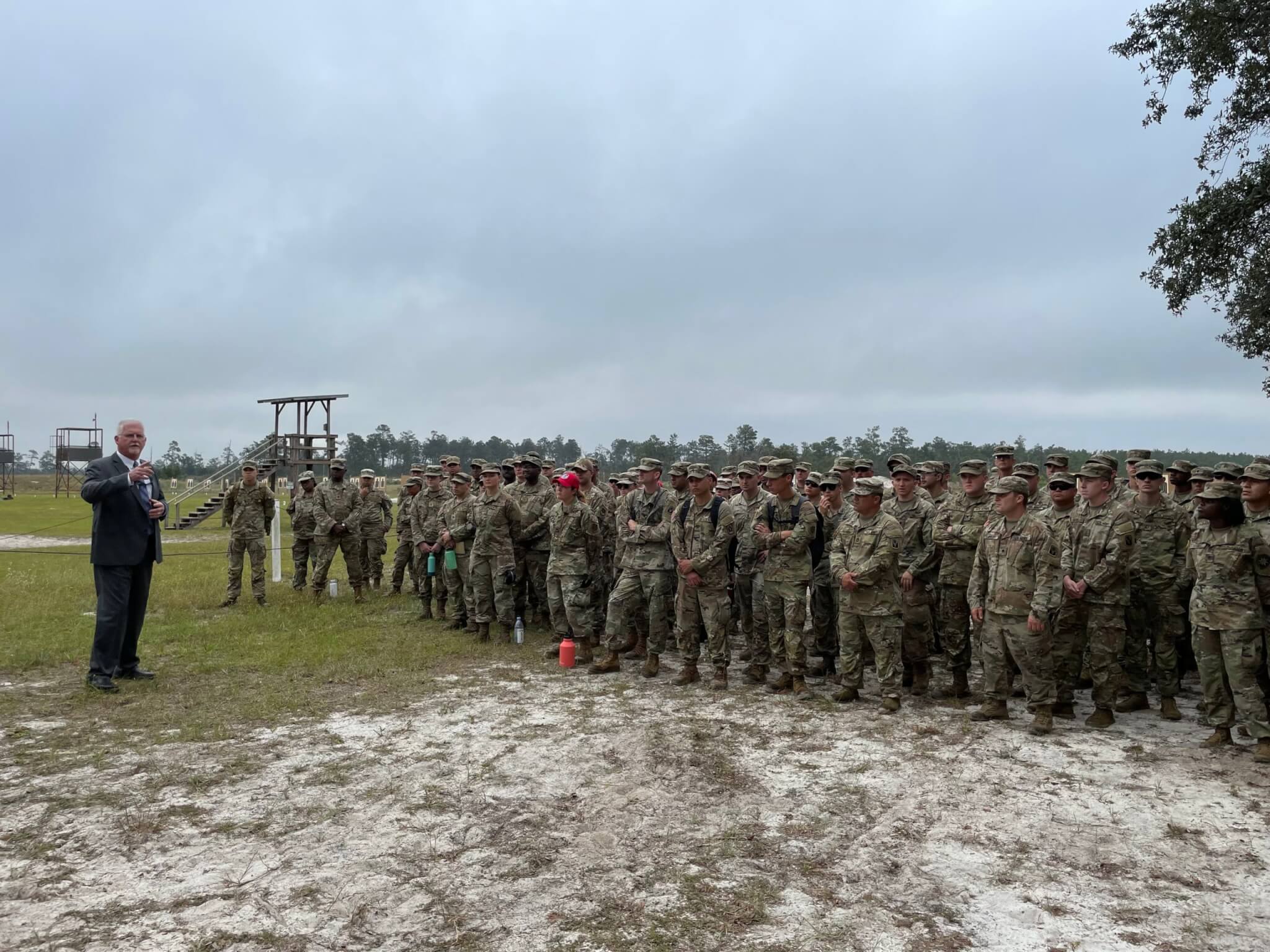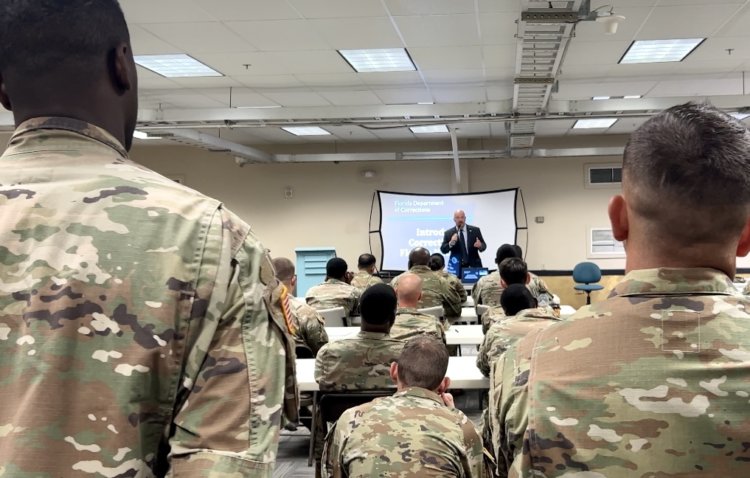Three hundred National Guard soldiers and airmen made a permanent benefit to Florida’s peace and security by deploying alongside staff in nine prisons, according to the state’s secretary of corrections.
Secretary Ricky D. Dixon said the Department of Corrections overcame a critical staffing shortage in northern Florida because the state’s Guard answered the governor’s request for aid.
“The guardsmen will surely be forever to credit for that recovery we’re experiencing now,” Dixon said.
Soldiers and airmen served nine months this year, which gave correctional officers better work-life balance. Compared to 2021, Dixon said, the agency hires more staff than it loses. He said successful collaboration between guardsmen and correctional leaders, wardens and officers met essential correctional needs while making the more positive staffing dynamics possible.
National Guard personnel mostly served in observatory posts, such as conducting perimeter surveillance or operating control rooms with video and telecommunications systems. For example, Spc. Hunter McDaniel was observing a video feed at Hamilton Correctional Institution when Dixon said an inmate committed battery against an officer.

McDaniel immediately initiated the facility’s incident command system and calmly relayed essential information to the control room. Twenty-five seconds later, emergency staff responded and took care of the situation.
“He did exactly as he was trained, and we are very proud,” Dixon said.
More than 100 miles away, Spc. Anori Hixon was observing inmates at Calhoun Correctional Institution when she saw inmates cause life-threatening injuries to another inmate. Her activation of the prison’s emergency assistance saved the inmate’s life, Dixon noted.
Lt. Col. Adam Bailey, who is a future operations officer at the Domestic Operations Center, planned and organized the activation from a 30,000-foot view. He’s been in the Guard for more than 20 years, seeing how the military trains personnel, places them where they need to be and houses and feeds them during their mission.
“We do this and train for this and we do it well,” Bailey said.
National Guard asylum-seeker assistance
More than 700 New York National Guard soldiers and airmen have been assisting asylum seekers in New York City for most of the year. More than 17,000 migrants from Latin American countries live in 16 hotels throughout the city’s five boroughs.
NYNG personnel receive the people at the Port Authority Bus Terminal and provide assistance so they get to the hotel where they live as the city processes their asylum request.
“The one thing the National Guard brings to this mission [is] support of reception, staging and onward integration,” said Col. Richard Goldenberg, of the New York National Guard.
Through the skilled actions of soldiers and airmen, the public affairs officer said the migrants are supported from the terminal with safe transportation to their accommodations.
On Nov. 11, Lance Cpl. William Kong offered far more than basic relocation assistance. The Marine Corps Reservist and New York Guard Pfc. Robil Rahyab noticed a baby in a hotel lobby wasn’t breathing.
As the baby’s family frantically called 911, Rahyab, a former EMT, and Kong, a volunteer firefighter, engaged medical skills. Once Rahyab restored the girl’s heartbeat, Kong determined the child’s heart rate and calmed the family.
RELATED: Midterm election cybersecurity support comes from National Guard in 14 states
Early in 2022, the New Hampshire Department of Corrections welcomed the Granite State’s National Guardsmen back. More than 25 soldiers and airmen offered 6,400 shift hours in the first quarter of the year. That addressed staffing shortages that persisted from 2021 into 2022.
The New Hampshire National Guard’s prison mission was straightforward, Lt. Col. Greg Heilshorn said. They backfilled support positions, such as providing perimeter security or completing administrative jobs.
Besides New Hampshire and Florida, the National Guard offered such help in West Virginia prisons. Governors know they can ask their state’s National Guard unit for assistance, Lt. Col. Bailey, of Florida’s National Guard said. He noted that anticipating combat operations means the Guard can scale up to the mobilization of brigade- and division-size elements.
Still, Hurricane Ian made the nine-month mission at Florida correctional facilities an uncommon and significant challenge. The training of soldiers and airmen for the DOC assignment was scheduled for the same week that the Category 4 storm hit. So, both missions for the National Guard became complicated as soldiers and airmen mobilized for serving in prisons and deploying to hurricane response and relief.
At the same time, Maj. Gen. James O. Eifert, who is the Guard’s adjutant general, required soldiers in Florida prisons to continue their training and drill days. Unlike hurricanes or forest fires, the corrections mission meant several months of serving, so Eifert said soldiers couldn’t miss training or drill days.
“They’re still maintaining their Florida National Guard proficiency,” Bailey said of the 300 soldiers and airmen who volunteered. “Readiness is a key indicator about a state or unit’s ability to go fight when called upon.”
Has your Guard unit been involved in a unique mission not include in this story? Email Associate Editor Kari Williams at kari.williams@ameriforcemedia.com with UNIQUE MISSION in the subject line.
Editor’s note: A previous version of this article incorrectly spelled New York Guard Pfc. Robil Rahyab’s first name. It has since been corrected.
Read comments







































